Gorteen
Houses within 15km of this house
Displaying 68 houses.
Houses within 15km of Gorteen
Displaying 68 houses.
| House name | Description | |
|---|---|---|
| Clonalis House | The present Clonalis House was built in the late 1870s replacing an earlier Georgian house, the ruins of which can be seen at Clonalis. Charles Owen O'Conor, the O'Conor Don, lived here at the time of Griffith's Valuation when the existing house was valued at £35. In 1814 Clonalis is recorded as the residence of John Balfe. The Census of Elphin records Margaret O'Conor as residing in Clonalis in 1749. |

|
| Cappagh | Occupied by Dillon Hughes at the time of Griffith's Valuation, when it was valued at £11 10s. He was leasing the property from Alexander Beatty. The National Inventory of Architectural Heritage suggests that this is originally a seventeenth century house with later additions. It is still extant and well-maintained. |

|
| Newforest | Built prior to 1777, Wilson refers to it as the seat of Mr. D'Arcy in 1786. It was held in fee by Richard D'Arcy at the time of Griffith's Valuation when it was valued at £24. It was demolished in the latter half of the 20th century. |
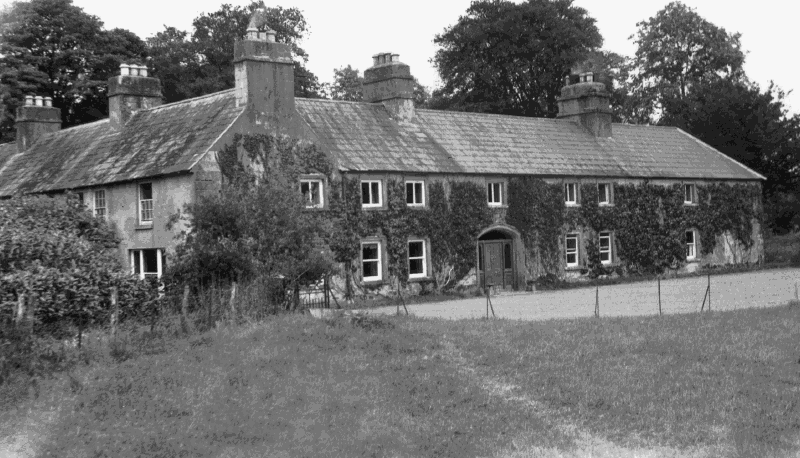
|
| Wellfort | Marked on the first edition Ordnance Survey map as Wilfort House, this property was held in fee by Richard D'Arcy at the time of Griffith's Valuation when it was valued at £18. It is named as Wellfort House on the 25-inch Ordnance Survey map of the 1890s. Wellfort is no longer extant. |
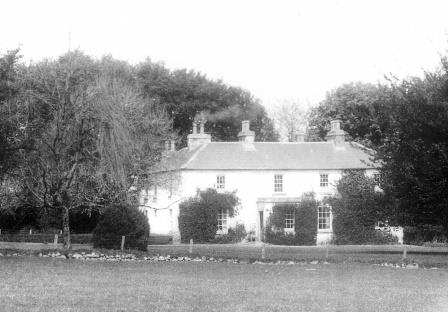
|
| Castletown | A Bodkin property, a small house is marked on the first Ordnance Survey map. A herd's house valued at £2 was held by James D'Arcy in fee at the time of Griffith's Valuation. Farm buildings exist at the site. | |
| Fiddaun Lodge | In 1786 Wilson refers to Fidane as the seat of Mr. Kelly. Melvin writes that John Dennis, the famous huntsman, was born at Fiddaun in 1800. Charles O'Rorke was leasing it from the Redington estate in the mid 1850s when the house was valued at almost £5. A house still exists at the site. |
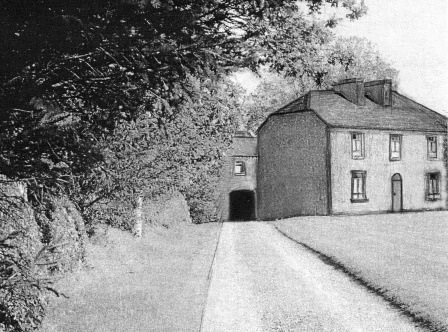
|
| Clonbern Park | A house built after the publication of the 1st edition Ordnance Map. The property in this townland was held by Charles O'Rorke at the time of Griffith's Valuation when it was valued at almost £8. Clonbern Park no longer exists but the stable block and walled garden are still evident on the site. |
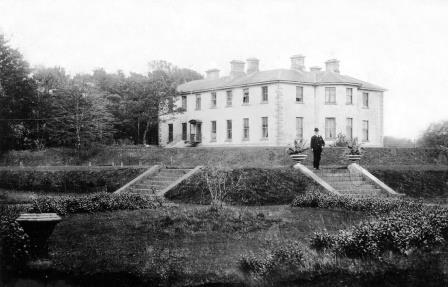
|
| Carrowleana House | At the time of Griffith's Valuation occupied by Andrew W. Irwin and valued at £15. The house has been demolished but the stables are still extant. | |
| Durrow | In 1786 Wilson refers to "Durra" as a seat of Mr. Bagot. At the time of Griffith's Valuation, Francis Hurley was leasing a property valued at £7 together with over 100 acres, from the Bagot estate at Durrow, barony of Ballymoe. A house is still extant at the site. |
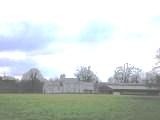
|
| The Hermitage | The original house, named Hamlet Cottage, was beside the road and is marked on the 1838 Ordnance Survey map. A new house was later built and is labelled The Hermitage on the 25-inch Ordnance Map of the 1890s. A house is still extant at the site. |
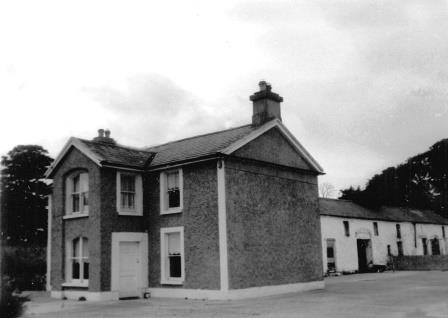
|
| Roseberry House | Described as 'an excellent two story slated house' in 1850. At the time of Griffith's Valuation it was held in fee by William Bodkin and valued at £15. This house is no longer extant. | |
| Ballintava | In 1906 Samuel Barret owned the mansion house at Ballintava which was valued at almost £14. The house is extant and appeared to be in the process of renovation in the early 21st century. |

|
| Carrolton House | The house known as Beagh Lodge, an O'Carroll house, is shown on the First Edition Ordnance Survey . It is not visible on the 25-inch Ordnance Map of the 1890s. A house on a nearby site is labelled Carrolton House on the latter map. The original house is not extant though there are later buildings. |

|
| Springfield House | 18th century two-storey thatched house, described in 1863 as a house of ancient construction, still occuppied by the McDermott family in the early 20th century. At the time of Griffith's Valuation, it was occupied by Owen McDermott who was leasing from William McDermott and Glasgow Connolly and was valued at almost £12.. Portion of the house is still extant. |
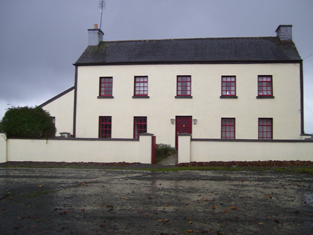
|
| Clooncah | A house built after the publication of the 1st Ordnance Survey map, at the time of Griffith's Valuation it was by John Love. The house was valued at £12 and held from John Armstrong. In 1885 Walford describes John Armstrong as a magistrate for county Galway, and of "Clooncagh and South Hill, Clifden". The site at Clooncah is now occupied by farm buildings. | |
| Turlough House (Ballymoe) | Held in fee by John Cheevers at the time of Griffith's Valuation when the buildings were valued at £7 10s. Occupied by John J. Cheevers in the early 20th century. This house is no longer extant | |
| Glinsk House | In 1786 Wilson refers to Glinsk as the "seat of the late Sir John Burke" and also as the seat of Sir Rickby Burke. Glinsk Castle and a substanial house are both marked on the 1838 Ordnance Survey map. The castle is shown on the 25-inch map of the 1890s but there is no trace of the house. At the time of Griffith's Valuation, Allen Pollok held buildings valued at £1 15 at the site, recorded as a herd's house. | |
| Kedagh Park | Held by Bartholomew Kelly in fee at the time of Griffith's Valuation when it was valued at £11 10s. The house is labelled Kedagh Park on the First Edition Ordnance Survey map but as Clondoyle House on the 25-inch map of the 1890s. A house still exists at the site. | |
| Cloondoyle | In 1786, Wilson refers to "Clondowel" as the seat of Mr. Blake. At the time of Griffith's Valuation it was occupied by Thomas Kelly and held from [his father] Bartholomew Kelly. The house was valued at £8. It is labelled Clondoyle House on both the First and 25-inch editions of the Ordnance Survey map. A house still exists at the site. |
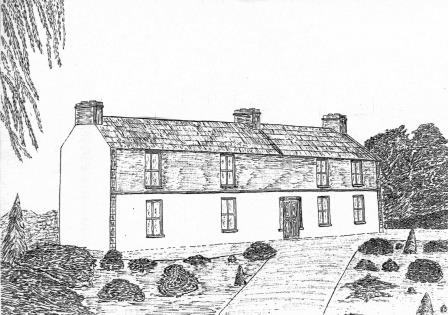
|
| Ashfield | At the time of Griffith's Valuation held by John Kelly in fee when the house was valued at £8. A building still exists at the site. | |
| Fairfield | Valued at £18 and held in fee by Pollok at the time of Griffith's Valuation. It is no longer extant. | |
| Millford | Allen Pollok held a steward's house and offices valued at £16 at Millford at the time of Griffith's Valuation. Extensive buildings remain at the site. | |
| Skehaghard | Built by Allen Dowell circa 1840. Occupied by Edward Dowell at the time of Griffith's Valuation when it was valued at £32. Advertised for sale in 1855 and bought by Alan Pollock. A lithograph and long description of the house are included in the sale rental. It was the home of Pollock's steward, George Lowe, for a time and leased to Martin J. McDonnell from 1883-1912. Taken over by the Congested Districts Board in 1918, the house was demolished in 1919. |
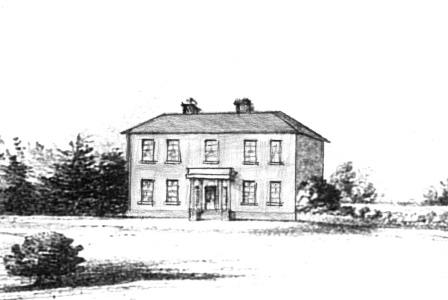
|
| Curraghbog | Leased by Allen Pollok to Michael Kelly in the mid 1850s when it was valued at £7. A house is still extant at the site. | |
| Newtown | John Burke, a gentleman, was living at Newtown in 1749. Valued at £4 in the mid 1850s. The property seems to have disappeared by the time of the 25-inch Ordnance map of the 1890s. | |
| Mount Kelly | A Kelly property in the mid 18th century, which passed to a branch of the Bellew family through marriage. The original house was known as Drum House but was in ruins by the 1820s. Mount Kelly was owned by John William Browne at the time of Griffith's Valuation. The 19th century house appears as Lakeview.on the 1st edition Ordnance Survey map but as Mount Kelly on the 25-inch edition of the 1890s. A house still exists at the site. |
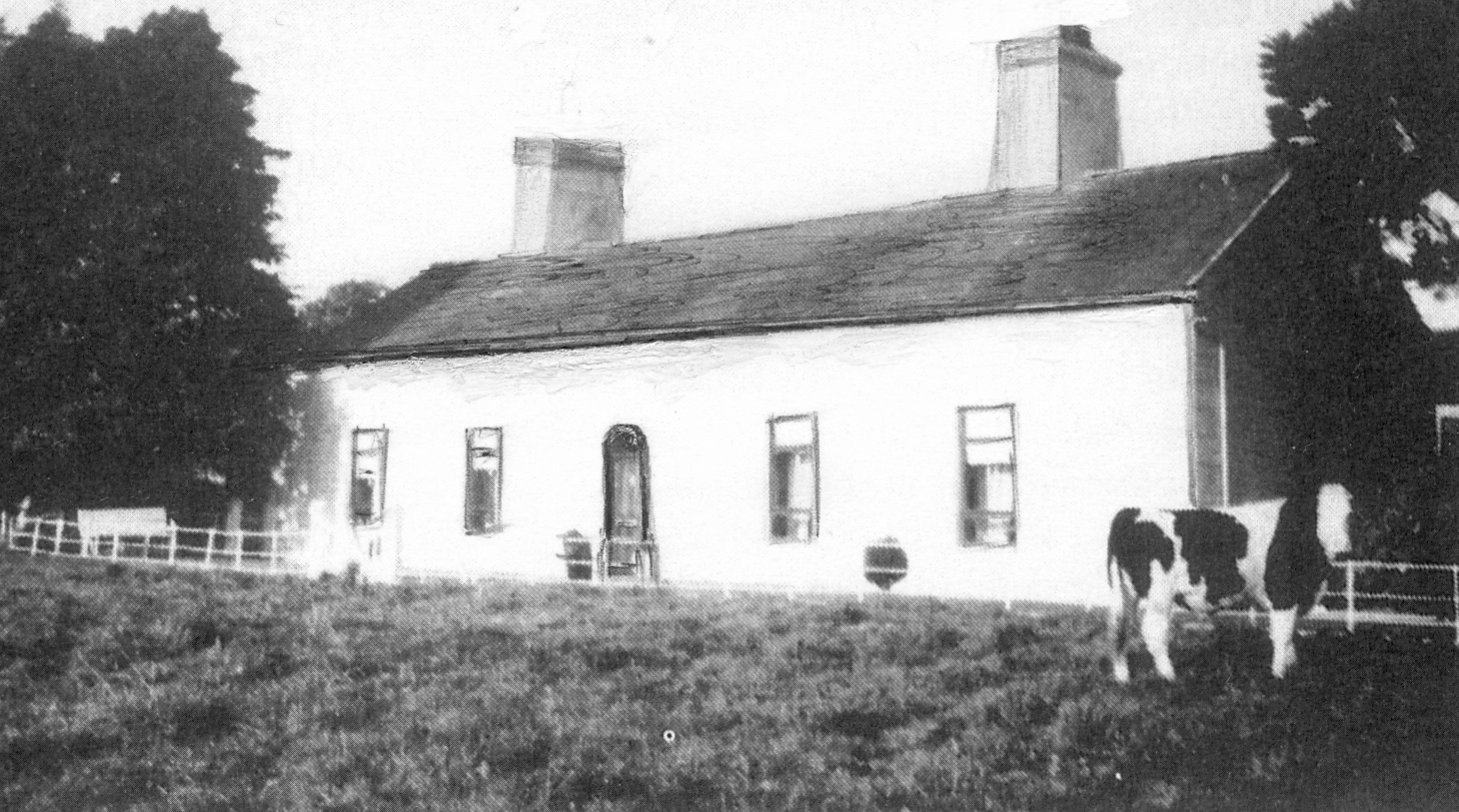
|
| Dunmore House | William D. Griffith, brother of Richard Griffith of ''Valuation'' fame, was agent to Sir George Shee in the mid 19th century and lived at Dunmore House. In 1894 Slater refers to Dunmore House as the seat of Captain Robert W. Martin. A fine ruin situated on the edge of the golf course. |

|
| Dunamon | A tower house with 18th and 19th century additions, In 1786 Wilson refers to Dunamon, the seat of Mr. Caulfeild, as "a fine old castle". Occupied by John Shiel, leasing from the Caulfeild estate at the time of Griffith's Valution, when it was valued at £35. In 1894 Slater refers to it as a residence of St.Geroge Francis Caulfeild. Bought by the Divine Word Missionaries from the Land Commission in 1939 and now in use as a care centre. |

|
| Dunmore Castle | A tower house occupied by the Ouseley family from the late 17th century. In ruins by the late 19th century. |

|
| Woodfield | Home of a branch of the Kirwan family in the 18th and early 19th centuries. By the time of Griffith's Valuation, the townland was owned by the Hancock family but no house had a substantial valuation. A house still exists at the site. | |
| Harristown | Harristown was the residence of James Young in the 1870s and at the time of Griffith's Valuation when it was valued at £20. In 1814 it was the seat of Capt. Young. Lewis records it as the seat of Owen Young. In 1894 Slater refers to it as the seat of Owen W. O'Grady Young. The Census of Elphin records the Young family at Knockro, parish of Kilkeevin, in 1749. Much of the demesne associated with Harristown is now occupied by Castlerea Prison. | |
| Fortwilliam (Castlereagh) | The estate of William W.R. Sandford was leasing the house at Ballyfinegan, barony of Castlereagh, to Patrick Tighe at the time of Griffith's Valuation when it was valued at £11. Lewis records a house called Fortwilliam in the parish of Ballintober as the seat of P. Teighe in 1837. The Census of Elphin recorded William Compton as resident at Ballyfinegan in 1749. There is still an extant house at the site. | |
| Frenchlawn | At the time of Griffith's Valuation, the estate of William W.R. Sandford was leasing a property valued at £12 at Frenchlawn, barony of Castlereagh, to James Glancey. In 1837 Lewis recorded Frenchlawn as the seat of Mrs. French. In 1814 it was the residence of Christopher French. There is still an occupied house at this site. |

|
| Willsgrove | William W.R. Sandford's estate was the lessor of two properties at Willsgrove, barony of Castlereagh, at the time of Griffith's Valuation. One, valued at £10, was vacant while the second was leased to Anne Glancey together with 260 acres. In 1837 Lewis records Willsgrove as the seat of W.R. Wills. In 1786, Wilson refers to Willsgrove as the seat of Thomas Wills, "a large and fine house". The 1749 Census of Elphin records that Godfrey Wills was resident at Willsgrove. In 1783 Taylor and Skinner note Willsgrove as a seat of the Wills family. It is described as "in ruins" on the 25-inch Ordnance Survey map of the 1890s. | |
| Bohagh Lodge | At the time of Griffith's Valuation, Robert Glancey was leasing a house valued at £6 and over 500 acres at Bohagh, barony of Castlereagh from Travers R. Blackley. | |
| Cleaboy House | Patrick Balfe was leasing a property valued at £10 from Teresa Madden at Cleaboy, barony of Castlereagh, at the time of Griffith's Valuation. A house is still extant at the site. | |
| Emlagh | Robert Irwin was leasing a property valued at £5 + 230 acres at Emlagh, barony of Castlerea, to Patrick Flynn, at the time of Griffith's Valuation. The Census of Elphin indicates that John Irwin resided there in 1749. Gormley states that the house was probably built around 1740 and extended in the early 1800s. By the 1880s the Irwins had sold Emlagh to Walter McDermott. The house was later demolished. | |
| Arm Lodge | William Lloyd was leasing a property valued at £8 to Laurence Henry at Arm, barony of Castlereagh, at the time of Griffith's Valuation. Lewis records this property as Arm Lodge, a seat of W. Lloyd in 1837. In 1814 Arm Lodge was the residence of Mr. John Cotton and in the 1870s of William Garnett. A house is still extant at the site. | |
| Dalefield | Lewis records a house called Dalefield, parish of Kilkeevin, as the seat of J. Grey in 1837. At the time of Griffith's Valuation Alice Gray was leasing a property valued at £10 to Charles O'Connell. In 1814 Dalefield was the residence of Michael O'Flinn. | |
| Caher | At the time of Griffith's Valuation, Harriett Dickson and Maria Squirl were leasing a property valued at £5 together with 235 acres at Caher, barony of Castlereagh, to Bernard Sweeney. | |
| Cloonkeen House | Patrick Sweeney was leasing a house valued at £12 at Cloonkeen, barony of Castlereagh, from the Sandford estate at the time of Griffith's Valuation. It is labelled Cloonkeen House on the 25-inch edition of the Ordnance Survey map. A house is still extant at the site. | |
| Castlereagh House | The principal residence of the Sandford estate was at Castlereagh House, barony of Castlereagh. It was valued at £80 at the time of Griffith's Valuation. In 1786 Wilson described it as "a most elegant and capital seat". In 1894 it was the residence of G.R. Wills-Sandford, Castlereagh House has been demolished. Gate lodges, one of which functions as Gaynor's Funeral Home, survive while part of the demesne lands is a public park for Castlerea town. |

|
| Longford Glebe | Longford House is best known as the birthplace, in 1860, of the first President of Ireland, Douglas Hyde. At the time of Griffith's Valuation it was leased by Rev. John Oldfield to William Cotton and was valued at £10. It is still extant and occupied as a private dwelling. |

|
| South Park | Patrick Balfe was occupying the residence valued at £45, at Southpark, barony of Castlereagh, at the time of Griffith's Valuation. In 1814 it was the seat of Michael Balfe who was also resident there in 1837. Gomley states that Daniel O'Connell was a frequent visitor to the house as his sister was married to one of the Balfe family. Slater refers to it as the seat of Major Michael Balfe in 1894. In 1783 Taylor and Skinner noted the property as the seat of Gen. Gisborne. In 1786 Wilson mentions South Park as "the fine seat of the late General Gisborne, now of Mr. Corr". Sadleir notes that Colonel Gisborne was MP for Lismore, in county Waterford in the 1770s and died in 1778. Skeffington Gibbon writes that South Park was built by General Gisburn on the Malone estate and was, in the late 1820s, in the possession of a grazier named Balfe. South Park House is no longer extant having been burned in 1921 but there are extensive remains of the walled garden and stable yard. |

|
| Termonbeg | Charles Broderick was leasing a property valued at £10 at Termonbeg, barony of Castlereagh, from the Sandford estate at the time of Griffith's Valuation. The house is not marked on the 1st edition of the Ordnance Survey. | |
| Willsbrook House | Originally a property of the Wills family who inherited the Sandford estate through Mrs. Mary Wills. In the 1850s Willsbrook was leased by Michael O'Connor. In 1814 it had been the seat of Daniel O'Connor. Willsbrook House is no longer extant. | |
| Ballinlough | Rev. Robert Blundell was leasing a property valued at £16 at Ballinlough, parish of Kiltullagh, from the Sandford estate at the time of Griffith's Valuation. This appear to be the Glebe House. It is now a ruin. | |
| Willsborough | Henry Sampy was leasing a property valued at £3 10s + 155 acres at Willsborough, barony of Castlereagh, from the Sandford estate at the time of Griffith's Valuation. In 1814 this property was the residence of Walter Jordan. The site of Willsborough House is now occupied by the Community Centre and pitches of Michael Glaveys GAA Club. A memorial stone for a dog owned by Helen Sampey is preserved against the wall of the building. |

|
| Cashlieve House | Lewis describes a house at Cashla in the parish of Kiltullagh as a sporting lodge belonging to W.R. Wills in 1837. In the 1850s William Sandford owned a property valued at £24 at Cashlieve, barony of Castlereagh. The house now known as Cashlieve House was built in the later nineteenth century. |

|
| Laragh and Ross | The residence of Thomas Tighe in 1814. In 1830 held in fee by the Mahons of Cavetown. At the time of Griffith's Valuation occupied by Patrick Joseph O'Connor who held the house from Patrick O'Connor. Modern farm buildings occupy the site now. | |
| Lowberry | The Encumbered Estates' Sale notice of May 1856 indicates that the mansion at Lowberry had "formerly" stood in the demesne and recommends it as a "most desirable site for building". It is shown on the First Edition Ordnance Survey map but no buildings are recorded in the townland at the time of Griffith's Valuation. It is labelled "Lowberry House (in ruins)" on the 25-inch map of the 1890s. A portion of these ruins still remain at the site. | |
| Tinny Park | Occupied by T.T. Byrne in 1837 and held in fee by Hugh Burns in the mid 1850s when it was valued at £11. It is still extant. It was offered for sale in 2016 and again in 2022. |
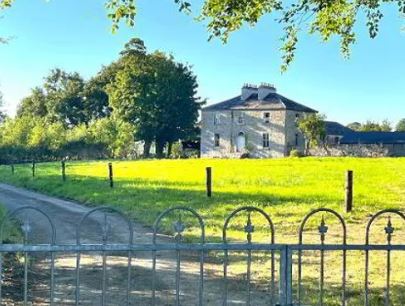
|
| Corrastoona More House | In 1749 Richard Kirwan was living at Coristoonamore. This house appears to have been the residence of K. Lyster [Kirwan Lyster?] in 1814 and of F.T. Byrne in 1837. Occupied by Patrick O'Connor in the mid 1850s, who held the house from Christopher Hamilton. Valued at £2 in 1906 and in the occupation of Sir N. O'Conor. It is no longer extant. | |
| Bopeep Lodge | A Blakeney property that was leased to H. French in the 1830s and to Robert French in the 1850s. |

|
| Dundermot | A Blakeney property, built circa 1750.Taylor and Skinner note is as occupied by Owens esquire in 1778. In 1786, Wilson refers to it as the seat of Samuel Owens Lee. It was the residence of Richard Kelly in 1814 and held by Patrick O'Connor at the time of Griffith's Valuation when the house was valued at £36. In the 1890s it became the home of the Blake-Kellys, although Nicholas O'Conor is recorded as the occupier in the valuation lists for 1906. Still extant and restored in the early 21st century. |

|
| Leabeg | Wilson refers to Leabeg as the seat of Mr. "Irvine" in 1786. The residence of Edward Irwin in 1814 and held by Daniel H. Irwin in fee at the time of Griffith's Valuation, when the house was valued at £6. It is described as "in ruins" on the 25-inch Ordnance Survey map of the 1890s. | |
| Runnamoat | Runnamoat was occupied by Bryan Fallon in 1749 and noted by Wilson as a seat of the Fallons in 1786. It was the residence of James Fallon in 1814. Acquired by James Balfe, tenth son of Walter Balfe, the house passed by marriage to the Chichesters who leased it to Richard Kelly in the 1850s, when it was valued at £70. Occupied by Raleigh Chichester Constable in 1906. This house is sometimes referred to as Runnimead. Burnt in the 1920s. | |
| Emlaghroyin | Built circa 1770, occupied by McDermot esquire in 1778 and also noted as the residence of Thomas McDermott by Wilson in 1786. The seat of Oliver Armstrong at the time of Griffith's Valuation, held from St George Caulfeild and valued at £30. This house is still extant. |

|
| Newtown | Originally an Irwin property, bought by the Brownes in the 18th century. Held by the Very Reverend Henry M. Browne at the time of Griffith's Valuation and occupied by Henry Farmer. | |
| Rushfield House | Occupied by Patrick Shiel at the time of Griffith's Valuation .Labelled Rushfield House on the 25-inch Ordnance Survey map of the 1890s. There is still a house at the site. | |
| Kilbegnet House | Occupied by John Shiel at the time of Griffith's Valuation and valued at £25. The property is labelled Kilbegnet House on the 25-inch edition of the Ordnance Survey map. A house is still extant at the site. | |
| Marnellsgrove | The home of the Marnell family at the beginning of the 19th century. Richard Marnell was resident in 1814. | |
| Dunmore Lodge | Melvin states that the Dunmore estate had been inherited by the Gores in the early eighteenth century and that Ralph Gore resided at Dunmore during that century. His mansion was subsequently in use as a barracks until it was destroyed during the Civil War in the early twentieth century. Marked on the Taylor and Skinner map of 1778 as the residence of the Earl of Ross and also noted as "the fine seat of the Earl of Ross" by Wilson in 1786. In 1814 Leet noted "Dunmore Lodge" as the residence of John Egan. | |
| Balydooley Lodge | John Hanley was leasing this property from St. George Caulfeild at the time of Griffith's Valuation, when it was valued at £5. It is still extant. | |
| Ardmore (Dunamon) | In 1786 Wilson refers to Ardmore as the seat of Mr. Croaghan. By the 1830s an extensive demesne is shown in the area but no house is visible. The townland is in the possession of St. George Caulfield of Dunamon by the time of Griffith's Valuation. | |
| Ashpark | In 1786 Wilson refers to Ashpark as the seat of Matthew Lyster. By the time of Griffith's Valuation this townland was in the possession of Christopher Hamilton and the most substantial house, valued at £4, was leased from his estate by Patrick Finner. Very little of the buildings are visible on the 25-inch Ordnance Survey map of the 1890s though farm buildings still exist at the site. | |
| Oran (Ballymoe) | In 1778 the residence of R. Malone esquire is recorded at Oran. Wilson also refers to this property as the seat of Lord Sunderlin [Richard Malone]. This residence may have been in the townland of Cartron, | |
| Cloonkeen Lodge (Kilkerrin) | Cloonkeen Lodge is shown on the 25-inch edition Ordnance Survey map of the 1890s. It occupies the site of an earlier settlement, Ballyphillipeen, shown on the 1st edition Ordnance Survey map. At the time of Griffith's Valuation this townland was held by William P. Cullen who held a house, valued at almost £5 in fee there. The building is still extant though not apparently in use. |
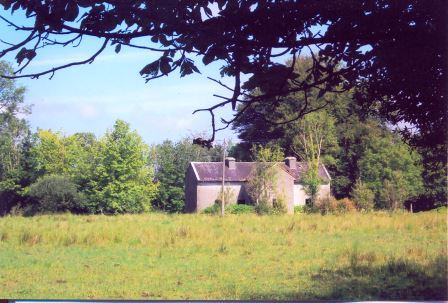
|

